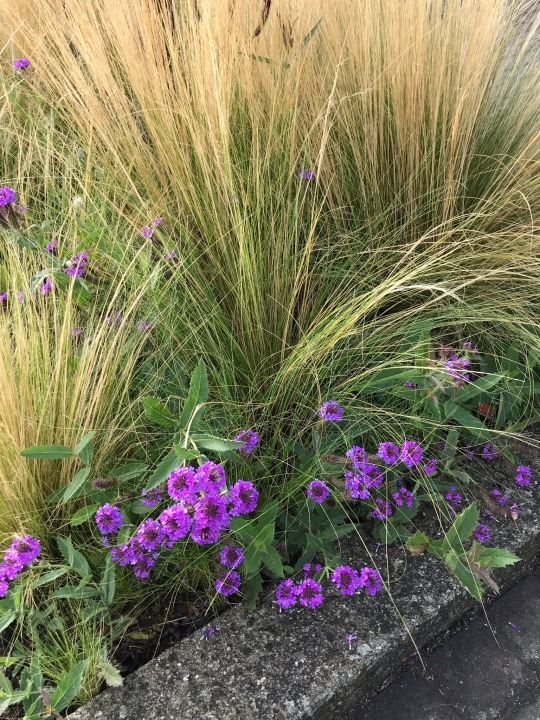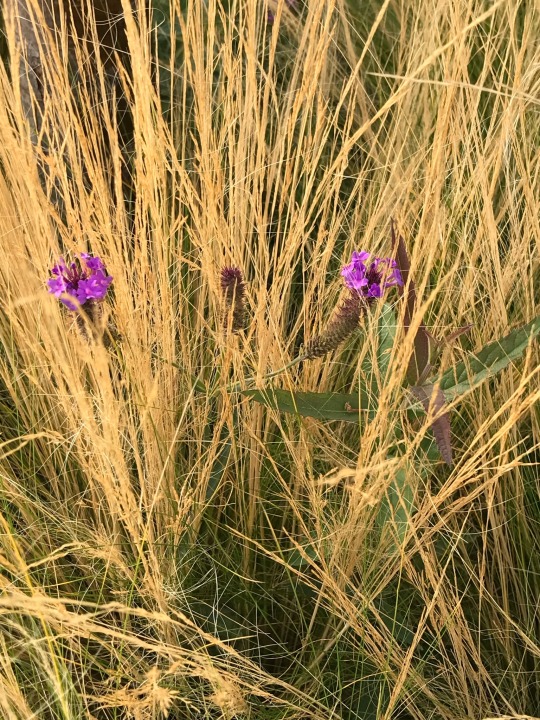#stipa tenuissima
Explore tagged Tumblr posts
Photo

Los Angeles Midcentury Landscape Ideas for concrete paver landscaping in a medium-sized, partially sunny, mid-century modern backyard.
0 notes
Photo

Los Angeles Midcentury Landscape Ideas for concrete paver landscaping in a medium-sized, partially sunny, mid-century modern backyard.
0 notes
Photo

Retaining Walls Landscape Manchester Design concepts for a small, summertime, stone-paved, transitional backyard.
0 notes
Photo

Decking in Los Angeles
#Inspiration for a mid-sized mid-century modern partial sun backyard landscaping with decking. claremont#modern wood deck#meadow grass#wood deck#stipa tenuissima
0 notes
Text
Sedum Plant - Easy to Grow

Sedums are succulent plants with fleshy leaves and flat, nectar-rich flowerheads that are loved by bees and other pollinators. Border sedums, also known as ice plants, have now been reclassified as Hylotelephium. Easy to grow, these sun-loving perennials are a striking feature in late summer, when masses of flat, bright pink flowerheads appear on upright stems. The flowers are extremely attractive to late-flying butterflies and bees. They look especially good planted with grasses such as Stipa tenuissima. Border sedums look great from spring onwards, as their fleshy green-grey foliage (purple on some varieties) is attractive in its own right. The flowerheads are green in spring, gradually taking on tinges of pink before flowering fully from August onwards. The dead flower heads are worth keeping on the plants – covered in frosts they look spectacular. You can snip them and display them for months in a vase, too. True sedum, or stonecrops, are small, fleshy-leaved succulents that spread like a mat. They originate in dry, rocky locations, so they're very drought tolerant. As well as attractive, evergreen foliage, sedums produce small nectar-rich flowers that attract pollinating insects. They make good ground cover outdoors, particularly on green roofs, and are sometimes used as an alternative to grass lawns. The tender varieties make good house plants and can also be grown outside in containers in summer. HOW TO Border sedums (Hylotelephium) grow best in a sunny spot, in well drained soil. They look best grown at the front of a border – try grouping several together. They are a good option if your soil is dry. These low maintenance plants need little care, although you could try the Chelsea chop in late May to prevent the plant flopping open in the middle – cut one in three stems to the ground. Stonecrops also need a sunny spot and well-drained soil – they are drought tolerant so don't need much watering. If growing them in a pot, incorporate some grit into the compost to ensure good drainage. Read the full article
0 notes
Text
Stipa Tenuissima
Commonly known as Mexican Feather Grass. It’s drought resistant, “desert landscaping,” so you see a lot of it around, including in our back yard. The rabbits love it, they’re always shredding the ends and chewing it down. It’s unusual to see it this long, especially given the number of bunnies seen every night in the yard. Proof that a plant doesn’t need to have spectacular flowers to…

View On WordPress
0 notes
Photo

Ukrasni lukovi iz čardak leje
Foto beleške ovih ljuičanstvenih kraljeva koji su cvetali početkom juna. Allium giganteum, miljenik insekata.
Krajem prošlog leta sam kupila nove lukovice na pijaci pošto su moji već godinu iz godine cvetali sve sitnije. Posavetovali su me da vole hranljivu zemlju, dosta vode i puno sunca, moraću primeniti tu recepturu u buduće ako želim ovako lepe velike cvetne glave.
Još jedna zanimljiva informacija koju sam nedavno čula je da za razliku od ostalog lukovičastog bilja za koje se savetuje da se skine cvet kada završi da ne bi lukovica trošila snagu na formiranje semena umesto da se goji za sledeću sezonu, a lišće ne sme da se kida dok se samo ne osuši jer ono hrani lukovicu...kod ovih lukova je suprotno. Njihovo lišće jako brzo postane neugledno i žuto, i biljci ne smeta da taj osušen deo odsečete jer lukovi se primarno hrane iz korena, takođe sasvim je ok ostaviti da se formira seme pošto bi svakako bilo nemoguće sprečiti formiranje semena jer dok su neki od cveti��a već iscvetali novi se tek otvaraju.


0 notes
Photo

The Kassiopia Estate, Two luxury private villas, each with a path down to a secluded beach and the most stunning gardens in north east Corfu. This is the view looking out to sea with pencil cypresses, Stipa tenuissima and Tulbaghia violacea ~ Clive Nichols
2K notes
·
View notes
Text



Plant of the Day
Sunday 16 October 2022
Providing colour into the autumn Verbena rigida (slender vervain, large-veined verbena) is a low-growing tuberous perennial. It’s not fully hardy and is best grown in well-drained soil to avoid excessive wet conditions. These growing conditions also suit the fine leaved grass Stipa tenuissima (Mexican feather grass) with which it was growing.
Jill Raggett
#verbena#slendervervain#large-veinedverbena#purpleflowers#tuberousperennial#stipa#Mexicanfeathergrass#ornamentalgrass#shortlivedperennial#plants#writtledesign#gardens#horticulture#garden#essex#rhshydehall#hydehall
75 notes
·
View notes
Photo

(via Pinterest)
Fernando Alonso (@feraloram) on Instagram: Nepeta Walker's Low and Stipa Tenuissima
9 notes
·
View notes
Text

Happy Thanksgiving! So very much to be Thankful for this year, both personally in my first year of retirement, and corporately for the future of our Democracy and role as a world leader. And Winter flowers are such a joy. Here are Delta and Penny series of Pansies and Violas in full bloom this morning on our front porch 1/4 mile from Puget Sound and 15 miles from Seattle across the water. They are planted with lovely Mexican feather grass (Stipa tenuissima aka Nasella tenuissima) which provides a billowy counterpoint year round. The Pansies and Violas, if potted up by early October will bloom all through winter, then put out a burst of growth and beaucoup blooms in Spring. They wilt every time the temperature goes a couple degrees below freezing (32 F or 0 C), but bounce back up as the temperature returns to our normal wintwr daytime high 30s/low 40s F. The Puget Sound Region and all of the west-of-the-Cascades Mountains part of the Pacific Northwest, western British Columbia and SE Alaska are blessed by the warmish Japan current that curls up from the subtropics past Japan and across the north Pacific Ocean. Very similar to how the Gulf Stream in the Atlantic moderates the climate of Western Europe. BTW the evergreens in the background include small ferns and the lovely Little Flames dwarf cultivar of Leucothoe axiallaris, with Vinca minor Illumination cascading down. The leucothoe has brilliant reddish new foliage in Spring and then colors up distinctly for Winter.
1 note
·
View note
Text
Stipa tenuissima in the wind
2 notes
·
View notes
Photo







Monarda Fireball
Rosas Sweet Juliet, Irene Watts (grows well in pots) and Great Maidens Blush
Lilium regale with Lupin the Governor
Stipa tenuissima
Scouts little charge for the weekend peeping over the tail gate
2 notes
·
View notes
Photo

delphinium, coreopsis e stipa tenuissima
464 notes
·
View notes
Text
A Kew botanist reveals what to plant to keep your garden looking lush during the next heatwave
https://sciencespies.com/nature/a-kew-botanist-reveals-what-to-plant-to-keep-your-garden-looking-lush-during-the-next-heatwave/
A Kew botanist reveals what to plant to keep your garden looking lush during the next heatwave

This summer has seen record-breaking temperatures, hosepipe bans and drought conditions, leaving our poor gardens looking a little worse for wear. While this year’s plants might struggle, we decided to get in touch with Faye Adams, the alpine and rock supervisor at Kew Gardens, to find out how to plant for heatwaves.
Advertisement
Californian poppies can cope with hot, dry summers © Getty Images
Choose plants with small leaves that lose less water through transpiration. These include thyme (Thymus), French lavender (Lavandula dentata), sea rosemary (Ozothamnus rosmarinifolius) and rough-leaf conebush (Leucadendron modestum).
Try planting plants covered in white hairs. These help reflect UV rays and trap a layer of humidity around the leaf. Examples are lamb’s ear (Stachys byzantina) and Turkish sage (Phlomis russeliana).
Opt for plants with succulent leaves that have a reserve of water, such as Aeonium, hardy aloe (Aloiampelos striatula), prickly pear (Opuntia) and Delosperma brunnthaleri. A lot of these can cope with cold temperatures but do not like wet in winter, so they’re not suitable for really heavy soils.
Some self-seeding plants will keep coming back every year and can survive in cracks of brick walls or paving. Good examples are Californian poppy (Escholzia californica) and Mexican fleabane (Erigeron karvinskianus).
Some grasses are great in drought, especially Mexican feather grass (Stipa tenuissima), Peruvian feather grass (Stipa ichu) and Chinese fountain grass (Pennisetum alopecuroides).
There are lots of choices for the herbaceous border. Sea hollies Eryngium maritimum and Eryngium bromelifolium, blue globe thistle (Echinops bannaticus), blue false indigo (Baptisia australis) and fiery wandflower (Dierama igneum).
Bulbs that are from warm climates such as Abyssinian gladiolus (Gladiolus murielae) and pineapple flowers (Eucomis) cope well, as do spring flowering bulbs that are dormant during the summer and don’t mind the heat, such as arum lilies. It is an opportunity to experiment with more unusual bulbs such as starfish iris (Ferraria crispa).
#Nature
1 note
·
View note
Photo

Čardak leja u maju
Prošle godine je srušen stari drveni čardak, dugo sam se svađala i borila za njegov opstanak iako je stajao godinama prazan i mami služio da suši veš i mesto za gomilu smeća...da znam, ali nekako sam emotivno bila vezana za njega.
Onda sam se setila da bi na njegovo mesto mogla da formiram jednu cvetnu leju okupanu suncem, koju sam simbolično nazvala čardak leja.

U aprilu leja je počela da se budi, cvetali su narcisi tete a tete, fritillaria persica, euphorbia koja se doslovno preporodila kako sam je prenela na novo mesto. Dok mi jei fritillaria imperialis Rubra potpuno podbacila, a kupljene su nove lukovice.
Početkom maja euphorbia polychroma je doslovno zračila ušuškana među ukrasnu travu (stipa tenuissima), a salvia Caradonna je počela da izbacuje cvetne stabljike.



Od irisa prvi je cvetao ovaj plavi kom ne znam ime jer sam ga dobila kao poklon, boja mu je divna. Pred kraj maja sve se više biljaka budilo.
Dugo sam se divila kombinaciji ukrasne trave sa salviom, a sada mogu uživo da se divim zelenim talasima koji su protkani ljubičastom.




Na red su došli i irisi koje sam jesenas sadila, Sultan’s Palace, Supreme Sultan, Exotic Isle i Sweet Mussete su me obradovali misrisnim cvetovima.




Supreme Sultan, je vetar slomio pa sam ga unela untra, i preko noći se otvorio i zamirisao neodoljivo.

Ovo nije kraj, spremaju se još mnoge biljke da preuzmu pozornicu, još malo pa će ogromni ukrasni lukovi ali detaljnije o onome što dolazi u sledećem javljanju!

#iris germanica#euphorbia characias#euphorbia polychroma#salvia caradonna#stipa tenuissima#fritillaria persica#čardak leja
0 notes